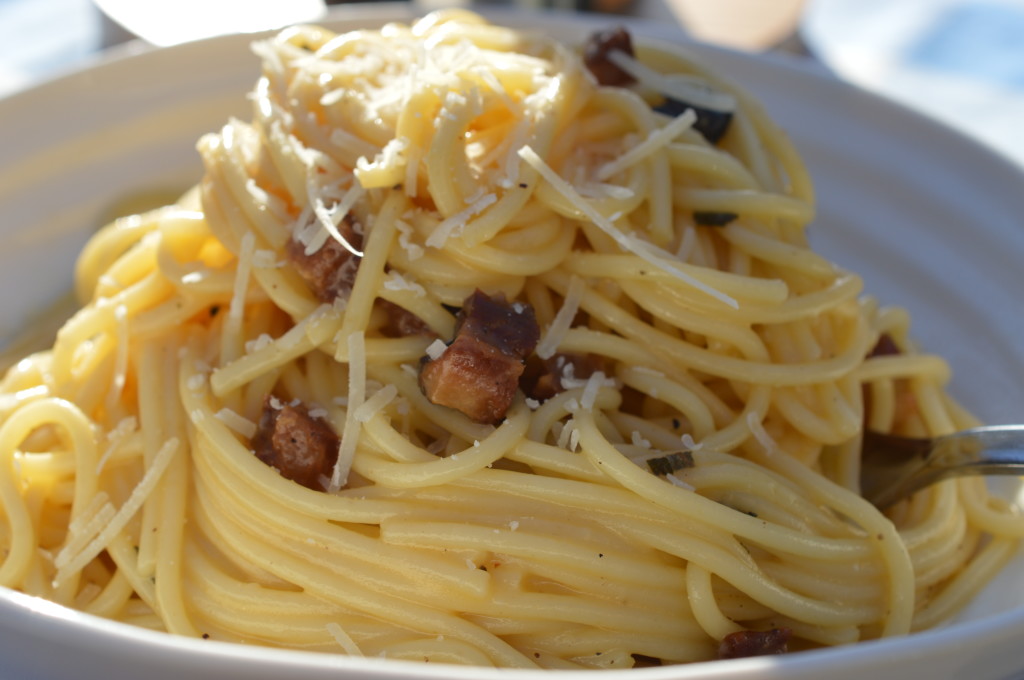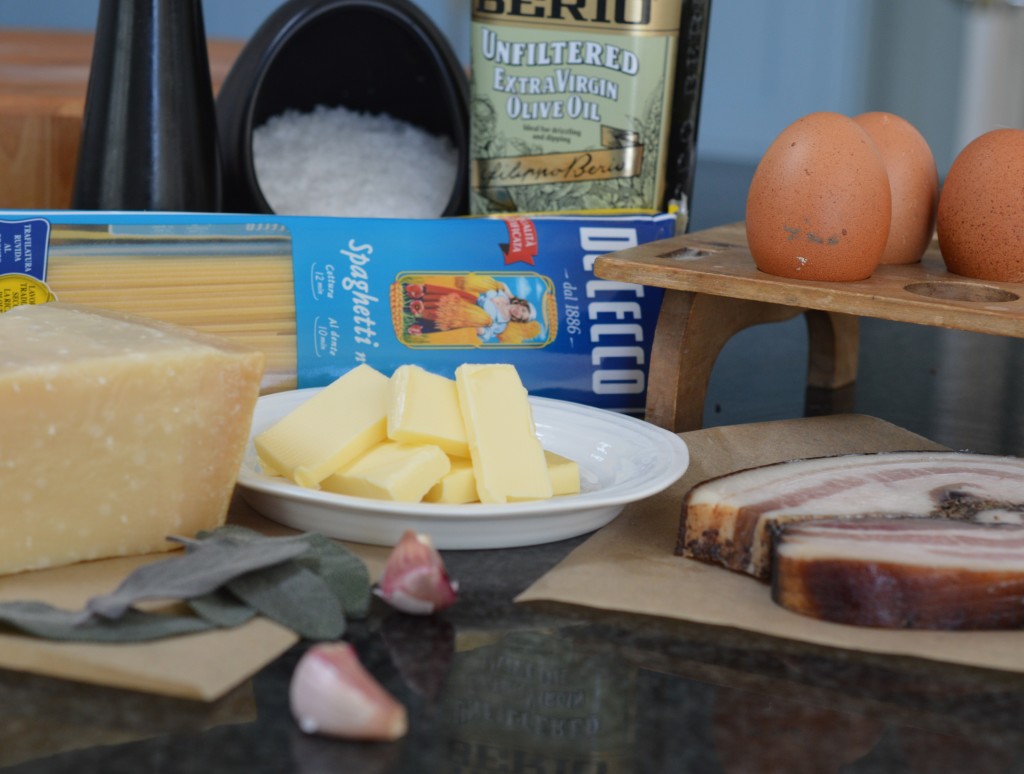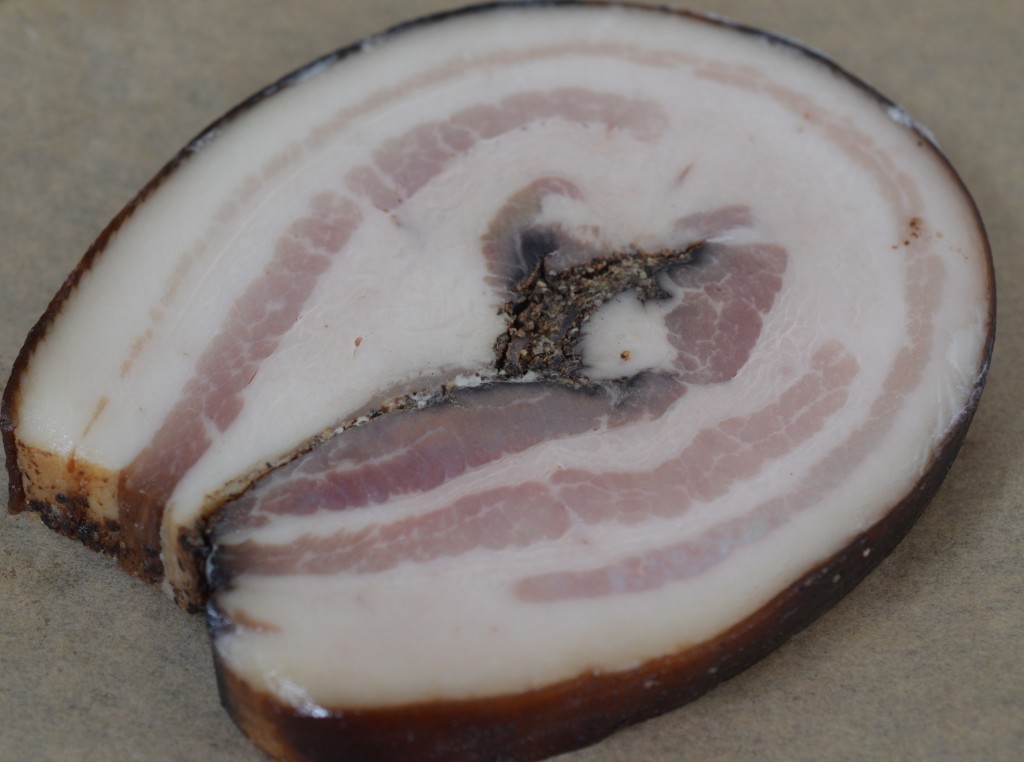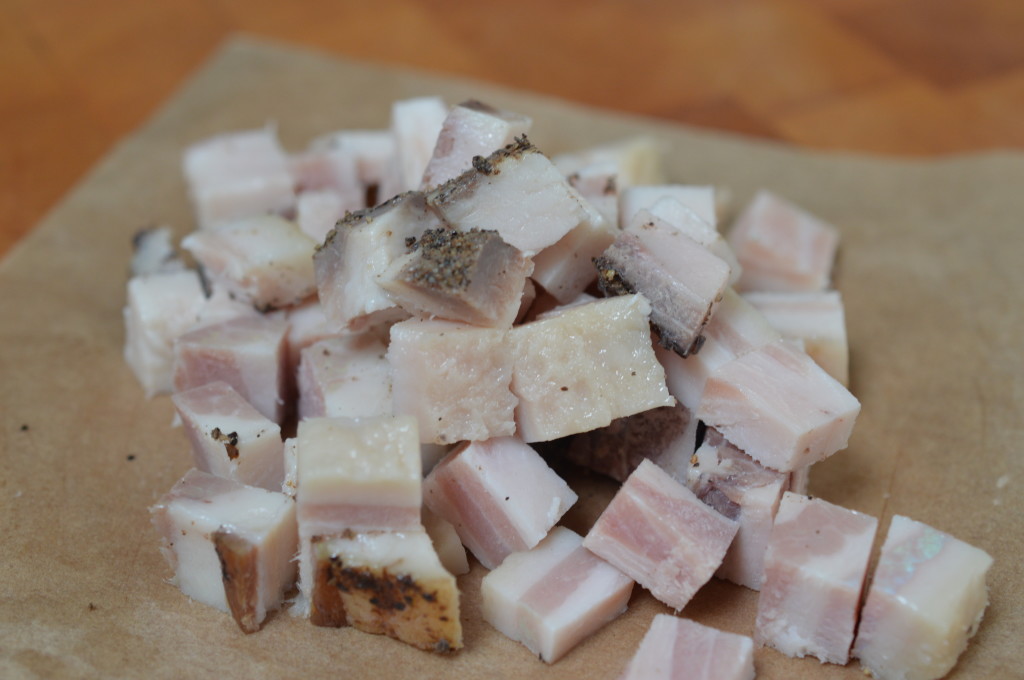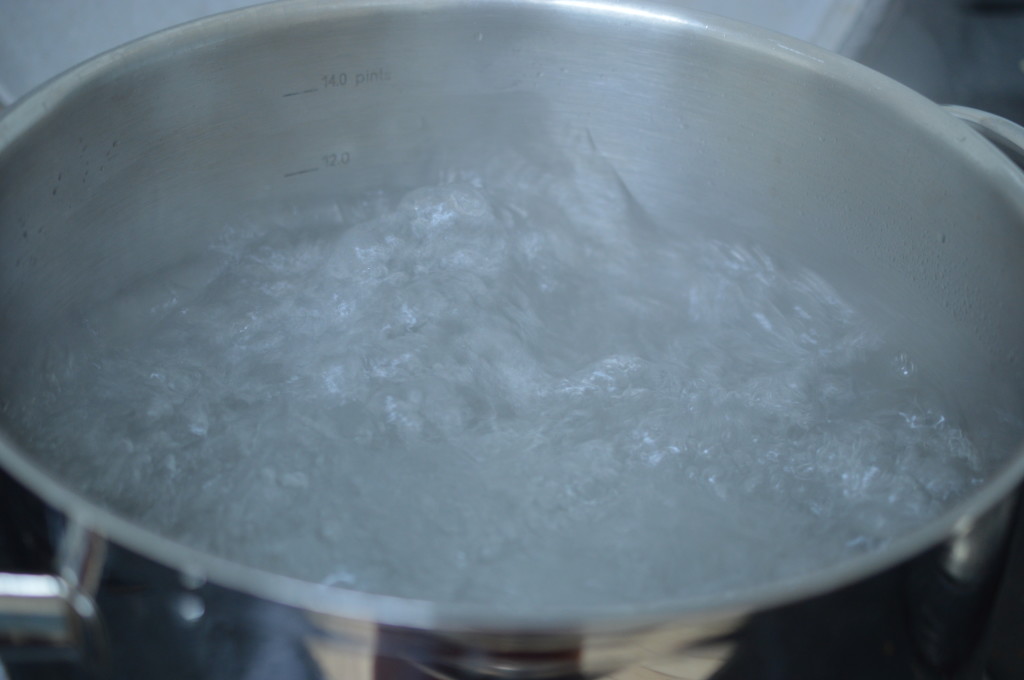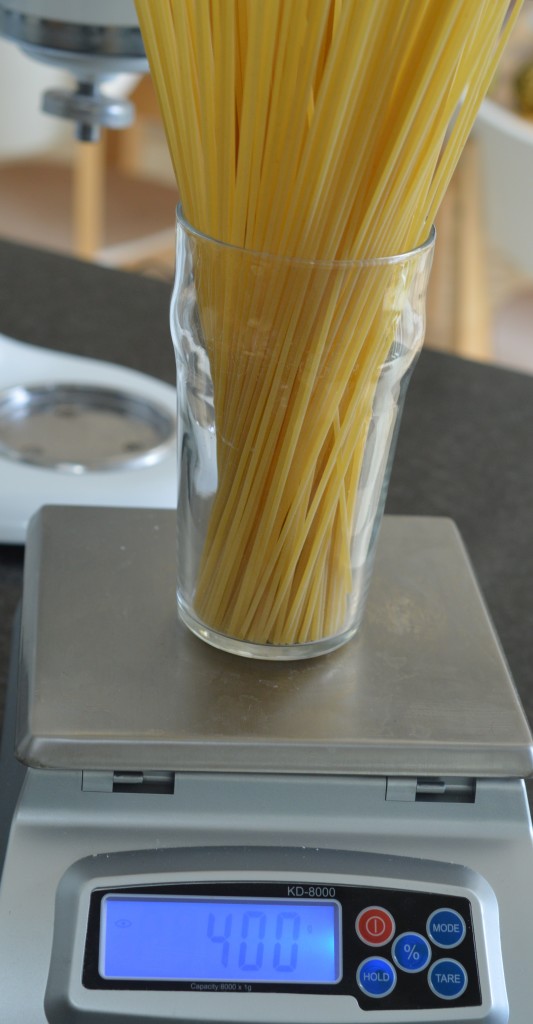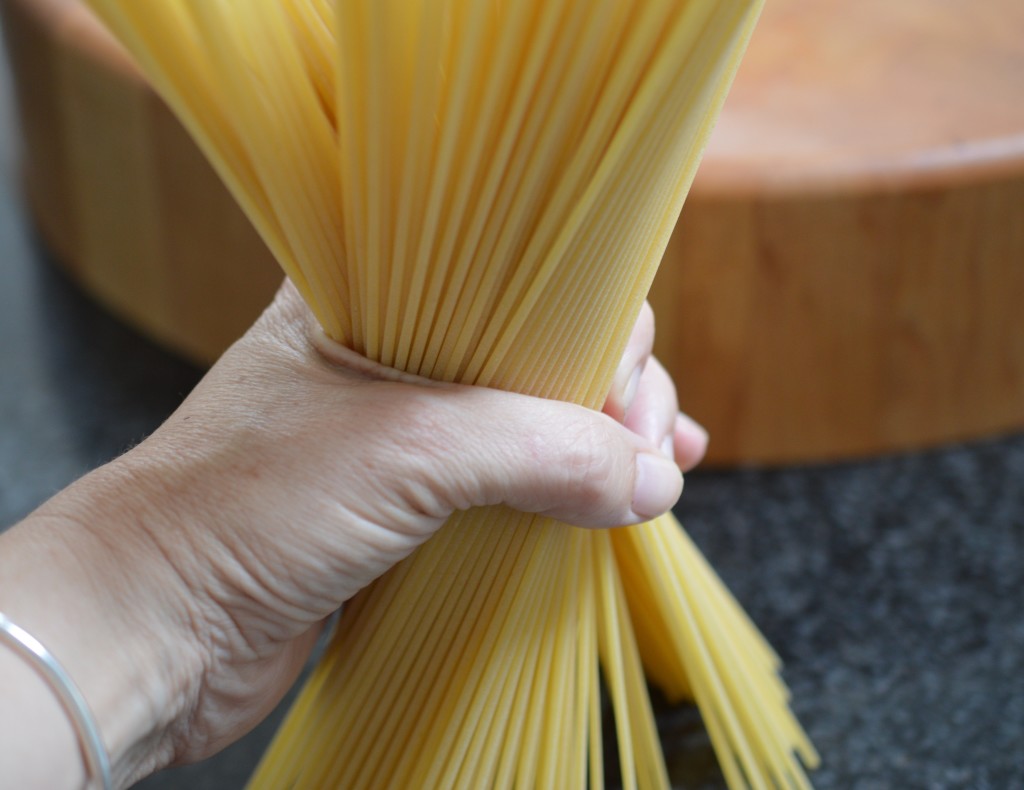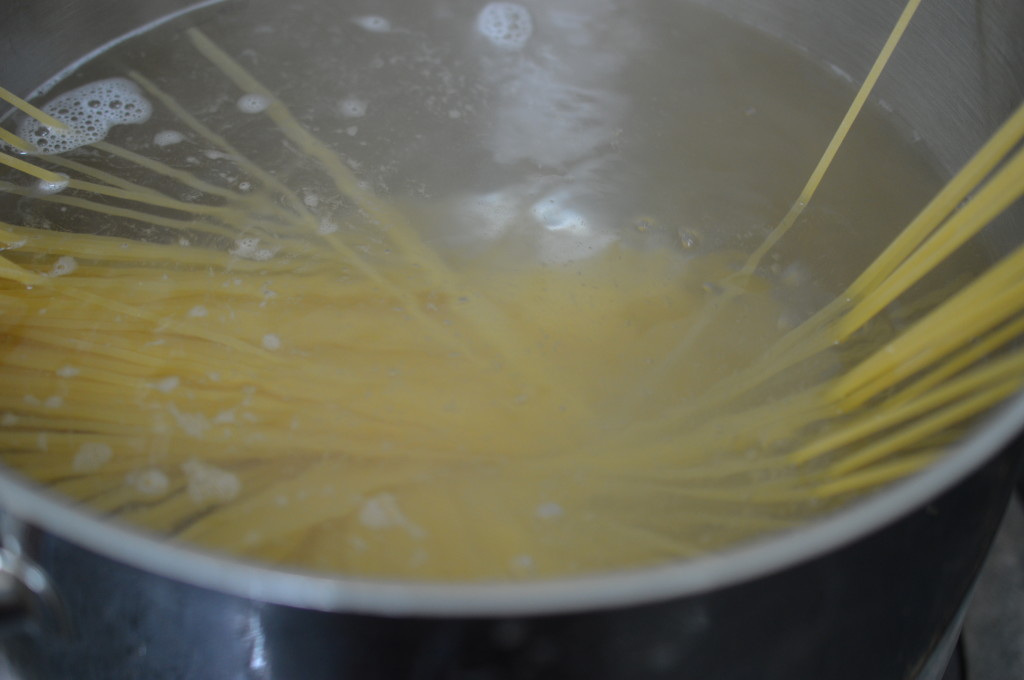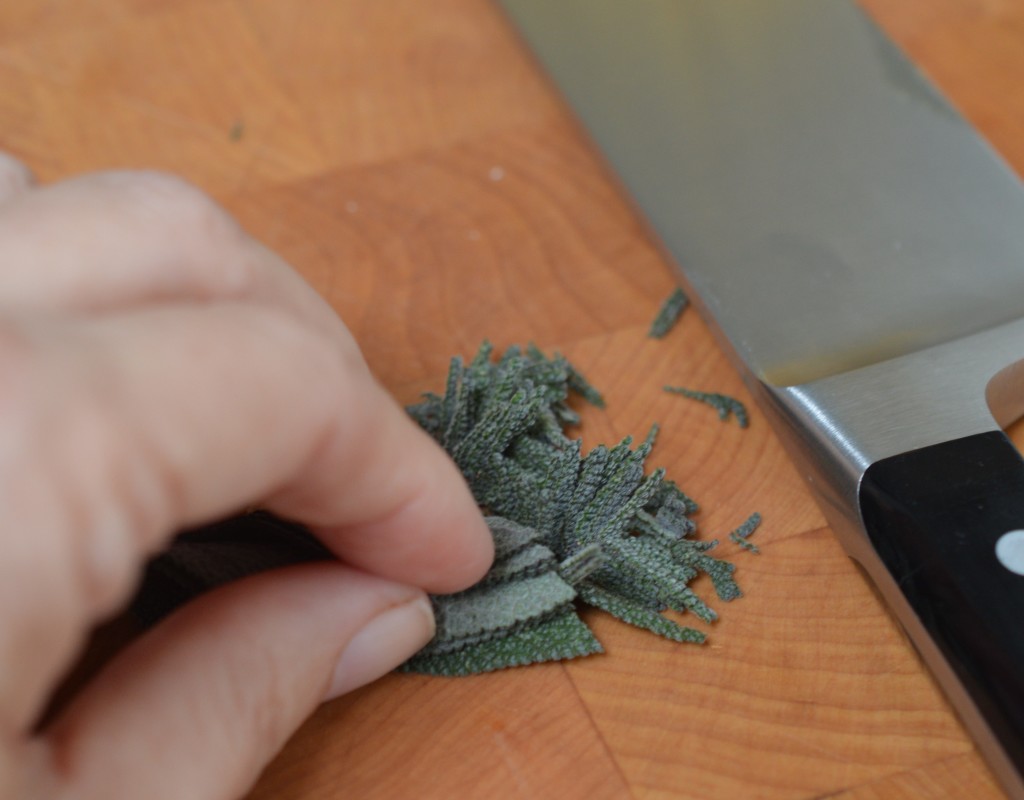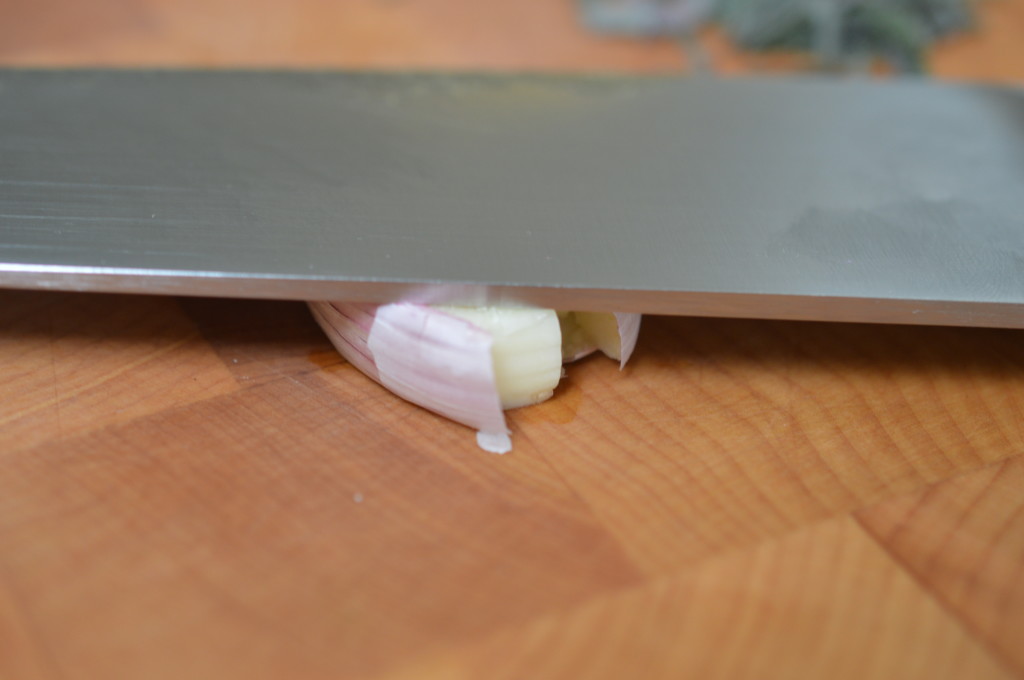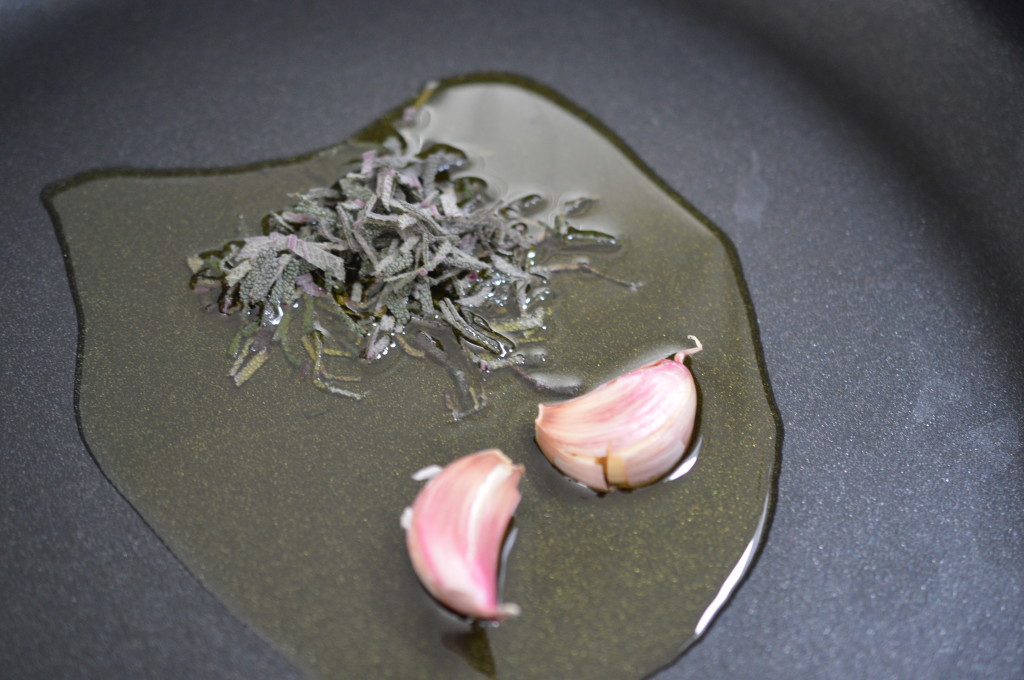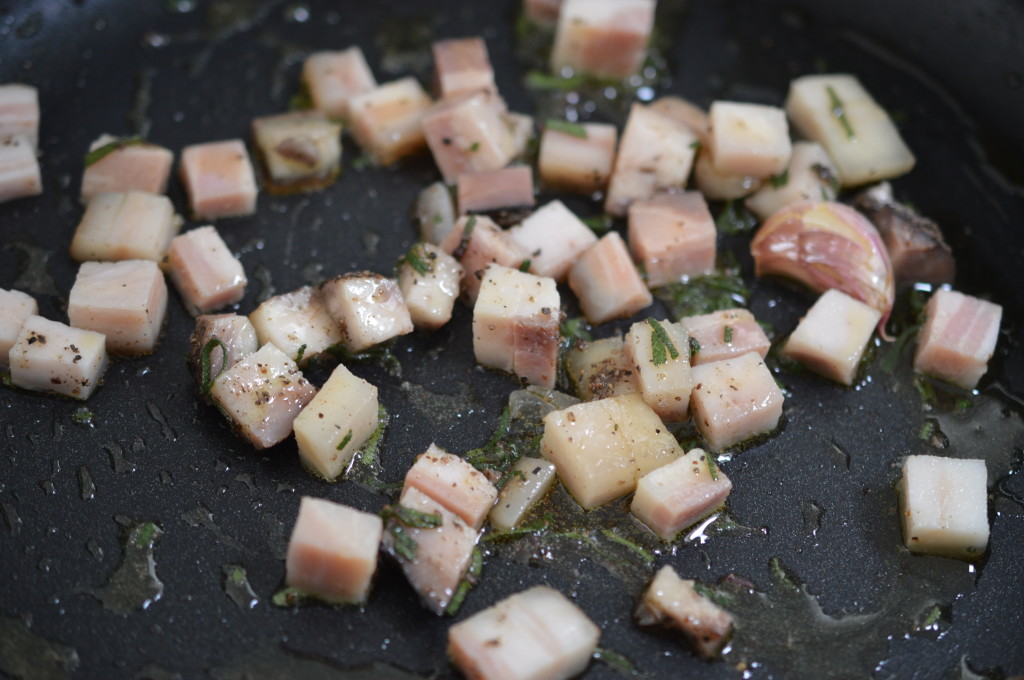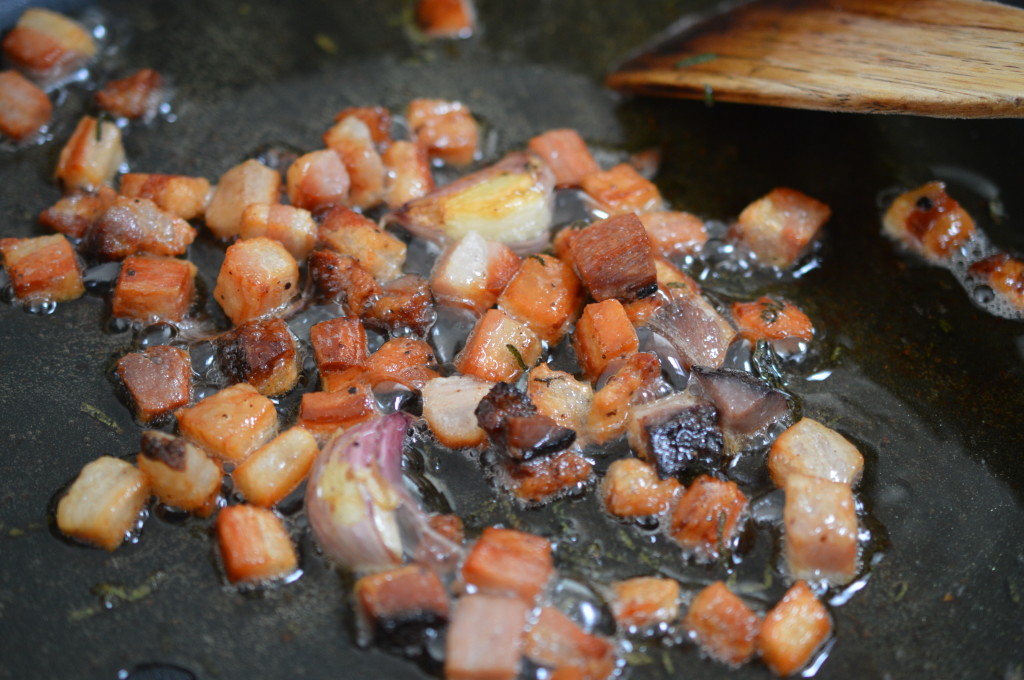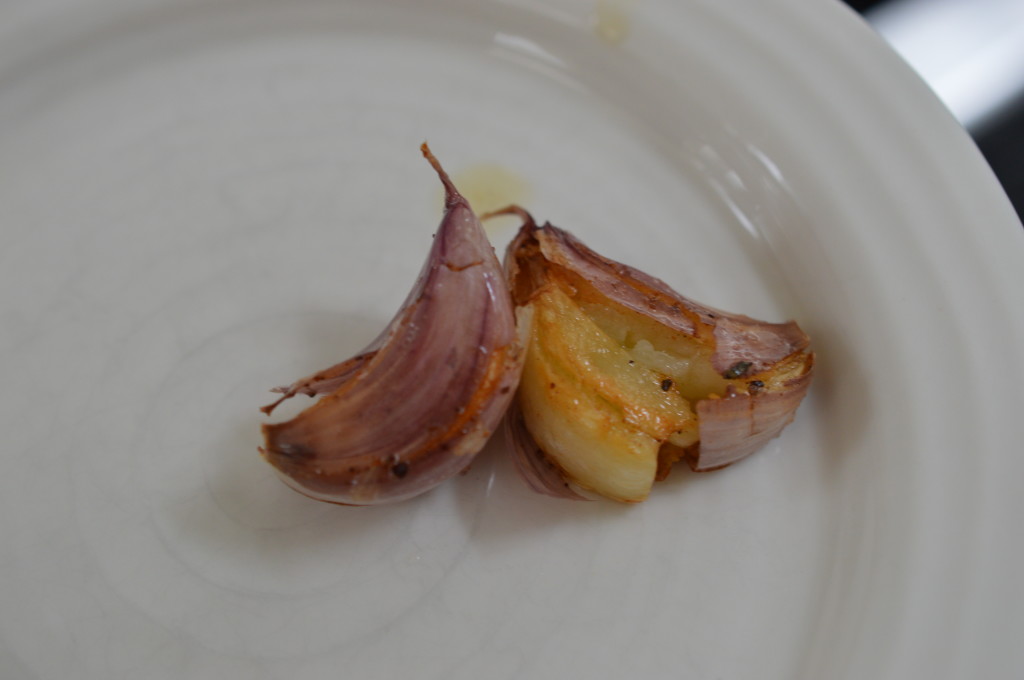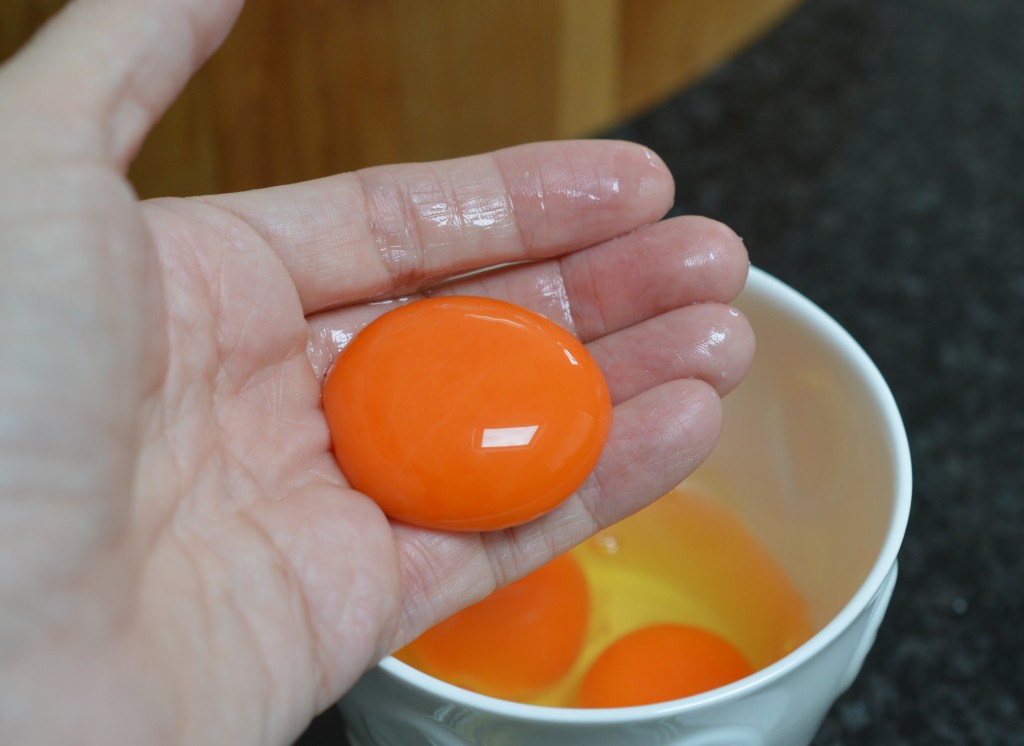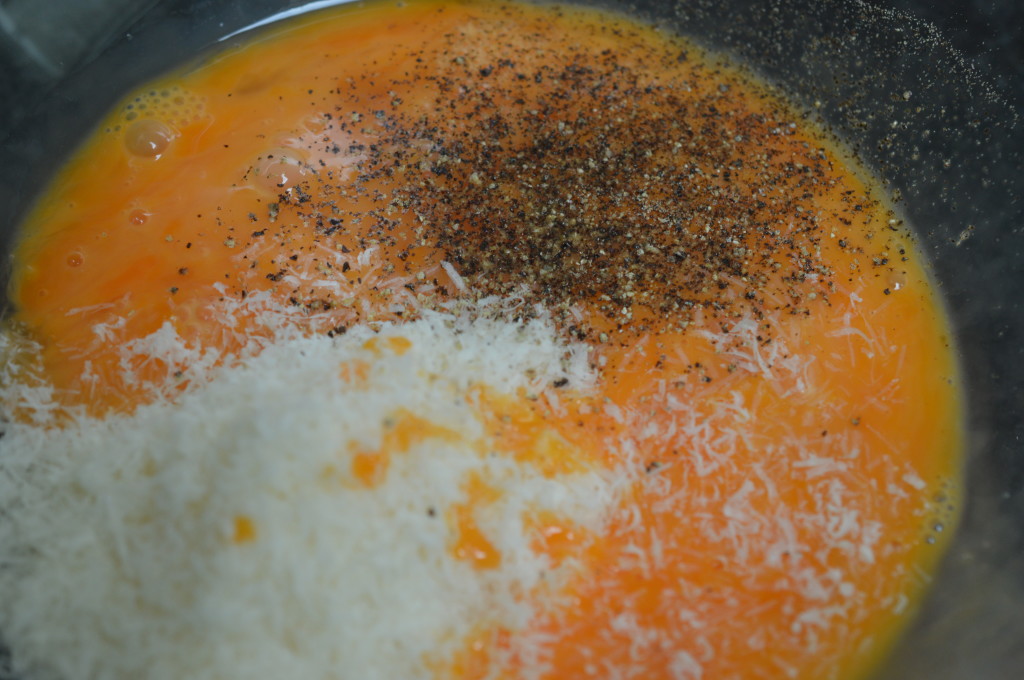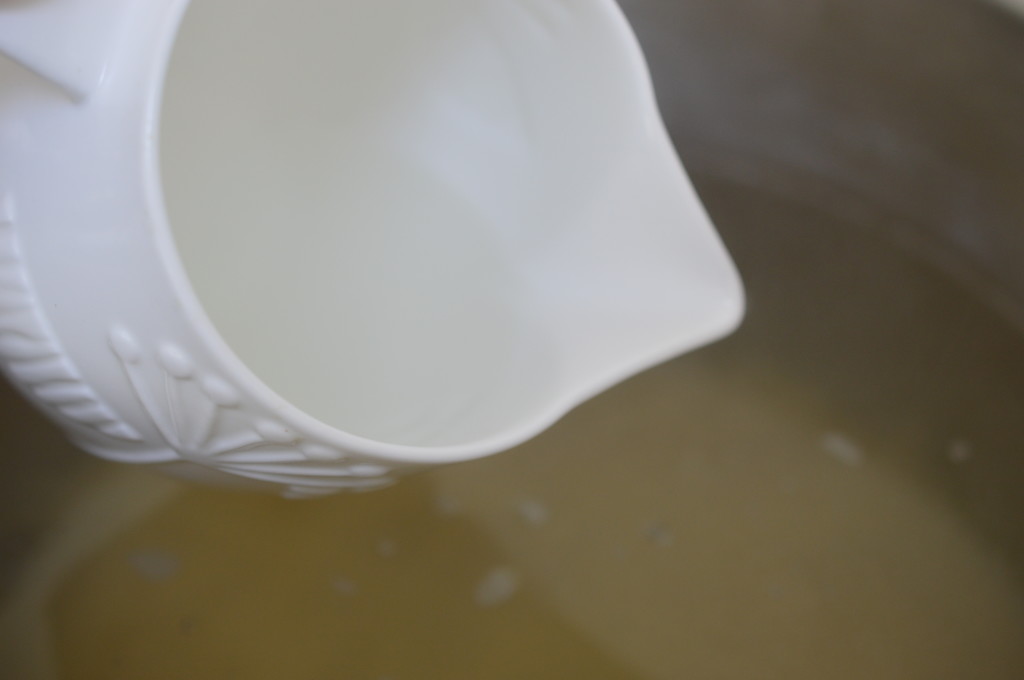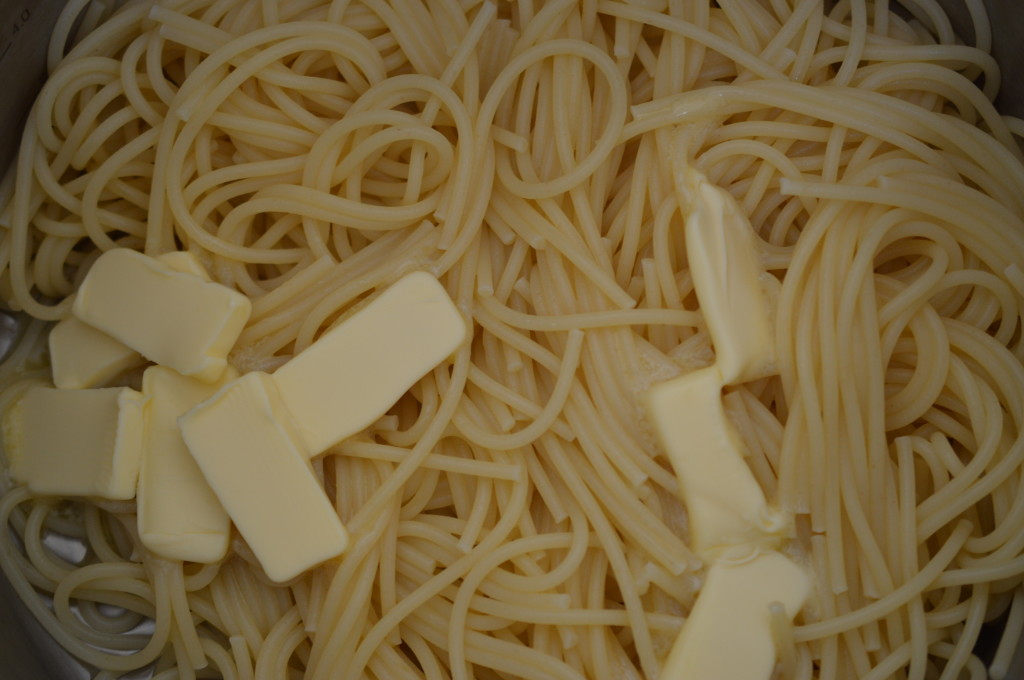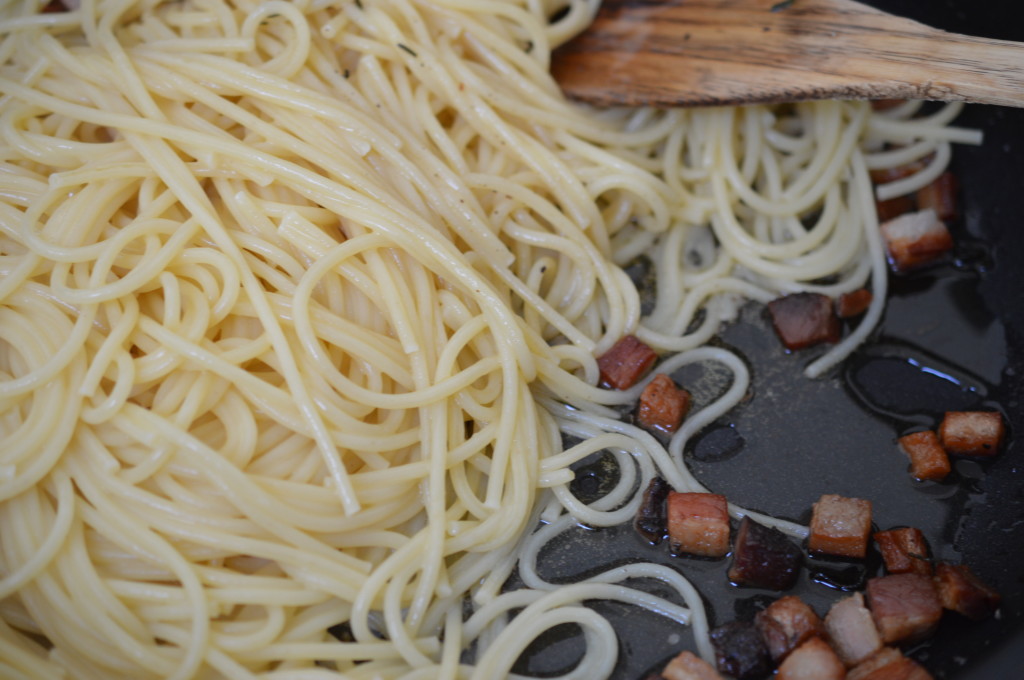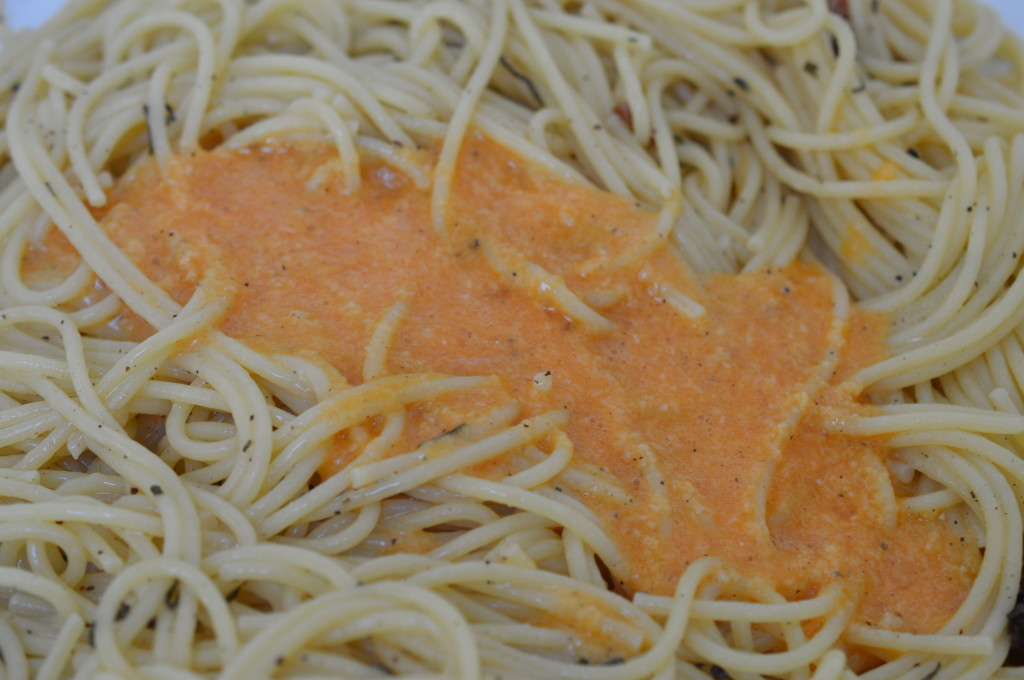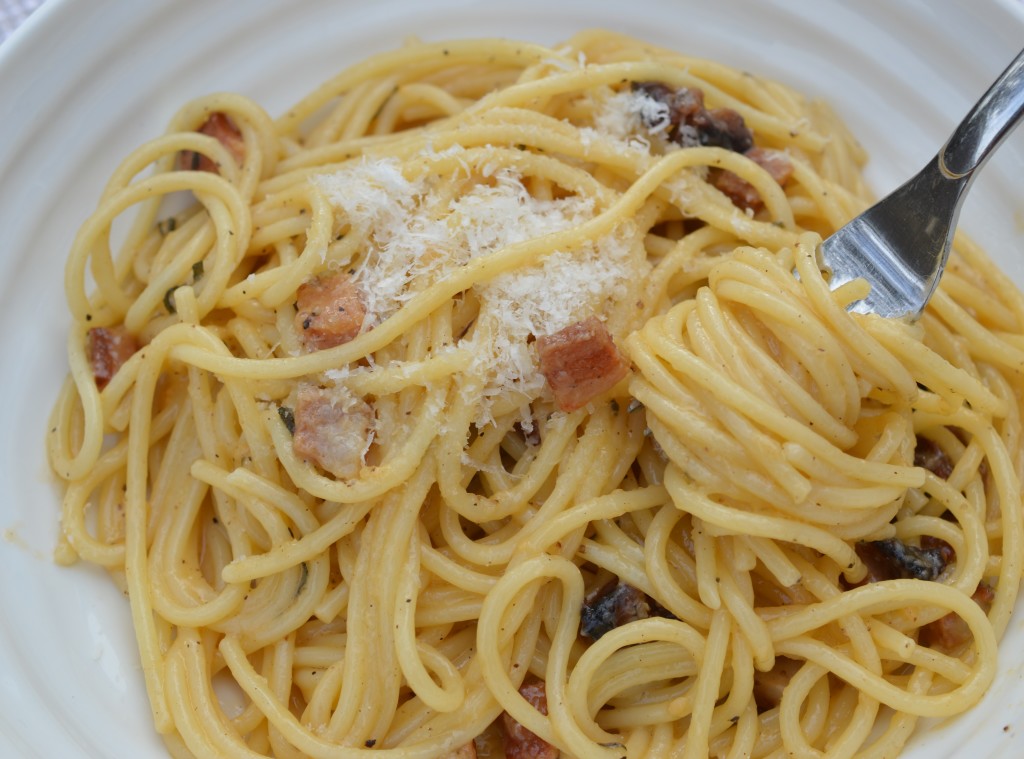Spaghetti alla carbonara
Spaghetti alla carbonara is an incredibly popular supper in my house. I suppose it’s not so very far removed from ‘eggs and bacon’ which might account for it.
Most of the recipes, published in the UK, are rich with double cream …
… but not this one.
It does make me wonder what they put in those gloopy jar sauces … The ingredients list is tiny. Store-cupboard/freezer stuff, really.
My carbonara sauce changed after a second visit to Rome. A fellow foodie had sent me on a trek to Trastevere and, more specifically, ‘Da Carlone’. Should you wish to follow in my footsteps you find it in Via della Luce 5, near Isola Tiburina.
Their carbonara was not heavy. Not gloopy. No wimpy bits of streaky bacon.
Da Carlone use guanciale which is pig cheek – and it was delicious. I’ve never been able to find that, so my replacement is pancetta. Helpfully, my local deli sells some beautiful pancetta. Don’t worry about the fat. Really.
Cut it up into nice bite-sized pieces.
Get your water on to boil. It’s 1 litre of water for every 100g dried pasta. Minimum. You need this quantity of water because the pasta will release lots of starch and too little water will see it being re-absorbed.
Keep the lid on – it will boil faster. Just before the water comes to the boil you add the salt. 10g for every litre of water is the guideline. This feels like a lot. I can’t honestly say I measure it, but I add until I feel like I’ve overdone it .. and never have. Coarse salt is preferable.
Think ‘as angry and as salty as the mediterranean sea’.
There’s no need to add any oil. If you think about it – oil floats on the surface of water so it’s not going to do anything to stop your spaghetti sticking together. (The only exception is lasagne sheets – a little bit of oil keeps them seperate as you slide them into the saucepan.)
Do I weigh my pasta??? Sometimes. Every now and then I give my portion sizes a check – it’s all too easy to supersize without meaning to.
How much per person depends on whether you are going all out. Pasta is often the Primo course – that’s the one slotted between Antipasto and Secondo. It’s smaller. 50g-ish, as there’s so much else to come. 100g per person is what I cook for a standalone family supper. 6ft menfolk get a larger portion than I give myself.
Give the bundle of spaghetti a bash on the work surface and it will splay out like a sheaf of corn. To be truthful I don’t think I’ve ever seen a sheaf of corn, but it’s how I imagine one might look …
Add the spaghetti to your fiercely boiling water. Give it a stir with a wooden fork and put the lid back on. You want the water to come back to the boil as quickly as possible.
Then lid off again … and get on with the sauce.
Roll the sage up and cut into little strips. Chiffonade is the posh name – just in case you need it for a charity quiz night.
Bash the garlic cloves, no need to peel. Love that.
Put the ‘good’ olive oil – yes, really – this is a time for the pricey extra-virgin olive oil – in a huge skillet type pan. On a low heat, warm the oil so that it’s flavoured with the sage and garlic. It’s all very … gentle.
Now add the pancetta cubes.
They are done when they look like this. Turn off the heat.
Fish out the garlic cloves. Their work is done. (If you love garlic, it’s almost irresistible not to squeeze it on some toast. Cooks’ perks?!?)
You need two eggs and one egg yolk for a ‘carbonara’ for four. (All the normal reservations about raw or lightly cooked eggs apply – ‘not for the very young, the elderly, when pregnant or for people with suppressed immunity’.)
Beat together in a bowl. Add the finely grated parmesan or pecorino and lots and lots of black pepper. Have your unsalted butter, cubed and ready.
Odd picture, I know. But, it’s back to the spaghetti. If you are feeding Italians you have to concentrate here. Soggy, water logged pasta wins no plaudits. Al dente. That’s cooked through with a slight bite so you know you are chewing something but no uncooked pasta at the centre. Test a strand 1 minute before the minimum cook time on the spaghetti packet.
Then, and this is why there’s this picture, scoop off a little of the starchy water before you drain the spaghetti.
There’s no need to be too thorough. A little water is all to the good. Return the drained spaghetti to the hot saucepan and add the butter. Give it all a good stir so the butter melts and coats the spaghetti strands.
Turn the heat on beneath the pancetta pan and tip the coated spaghetti into it. Stir to coat with flavoured oil and disperse the pancetta cubes.
Then tip the spaghetti into a warmed serving bowl and immediately add the cheesy egg mixture. Stir. The hot spaghetti will ‘cook’ the eggs. (If you’ve got everything too hot you’ll end up with scrambled eggs. It looks revolting but will taste just fine.)
A few tablespoons of the reserved starchy water will make everything silky smooth and surprisingly creamy tasting.
That’s it. A little parsley would have looked pretty but it tastes better without it. Lots of Parmesan or Pecorino, freshly grated. Buon appetito.
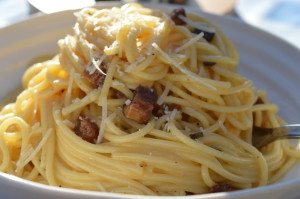 Spaghetti alla carbonara – Serves 4
Spaghetti alla carbonara – Serves 4
- 2 tablespoons of extra-virgin olive oil
- 6 sage leaves
- 2 garlic cloves, bashed
- 150g/5oz guanciale or pancetta, cubed
- 400g/13oz good quality dried spaghetti
- 2 whole eggs and 1 egg yolk
- a handful of Parmesan/Pecorino – about 8 tablespoons, finely grated
- 60g/2¼oz unsalted butter, cubed
- coarse sea salt
- Freshly grated black pepper
Bring a large saucepan of water to the boil and prepare all the ingredients. It helps to have everything ready.
Gentle warm the oil in a large frying pan or skillet and add the sage and garlic. Once the oil is flavoured, add the guanciale or pancetta cubes and fry over a higher heat until golden brown and the delicious fat partially melted. Remove the garlic cloves.
Cook the spaghetti in vigorously boiling salty water.
Beat the eggs and egg yolk together. Add the finely grated cheese and lots of freshly ground black pepper.
Once the spaghetti is al dente, drain. Make sure to reserve a little of the starchy water before doing so.
Return the cooked spaghetti to the hot saucepan and immediately add the cubed butter. Stir to melt the butter and coat the spaghetti strands.
Tip into the pan in which you have the guanciale or pancetta. Stir fry over a medium heat for a few minutes. Let the flavourful oil coat the pasta and disperse the bite sized guanciale or pancetta.
Transfer to a warmed serving dish. Tip in the egg and cheese mix with 3-4 tablespoons of the starchy water. You may need a little more to create a smooth, fluid sauce. Stir to combine. Serve immediately.
Extra parmesan/pecorino to grate over is lovely. Buon appetito.
